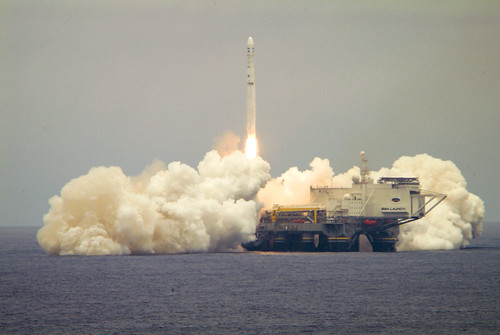Amos & Land Launch
Thursday, April 24th, 2008
There are only eight countries that build communications satellites: France, Germany, Japan, the U.S., India, China, Russia and Israel. Yes, Israel. Who knew?
Built by IAI, the Amos-3 satellite is scheduled to launch on Friday, 25 April 2008, according to Tsenki:
На космодроме Байконур завершаются работы по подготовке к пуску ракеты космического назначения "Зенит-3SLБ" с разгонным блоком "ДМ-SLБ" в качестве третьей ступни и коммуникационным космическим аппаратом Amos 3.
The Amos satellite system is operated by Spacecomm, also based in Israel. Launch service is provided by Land Launch, which uses essentially the same rocket as Sea Launch, only from Baikonur.
The Jerusalem Post is reporting the launch was delayed by 24 hours:
The expected launching of Israel’s Amos 3 communications satellite, which was slated to take place at approximately 8:00 a.m. Thursday in Kazakhstan, was called off due to technical difficulties. The Israel Aerospace Industries (IAI) announced that the launch would be put off by at least a day after a failure was detected in the satellite’s launching system.
As a result of the postponement Beit Hanassi canceled a large reception that was to be hosted by President Shimon Peres to commemorate the launch.
No word yet whether this launch will be webcast, but the launch window opens at 02:00 GMT.
Interesting mission:
AMOS-3 will be deployed to the 4°W orbital slot, where it will join the AMOS-1 and AMOS-2 satellites, eventually replacing AMOS-1. AMOS-3 will offer additional capacity, coverage areas, and advanced capabilities such as two wideband Ka-band beams of up to 500 MHZ each and 12 Ku band 72MHZ transponders with steerable beams for global coverage.













